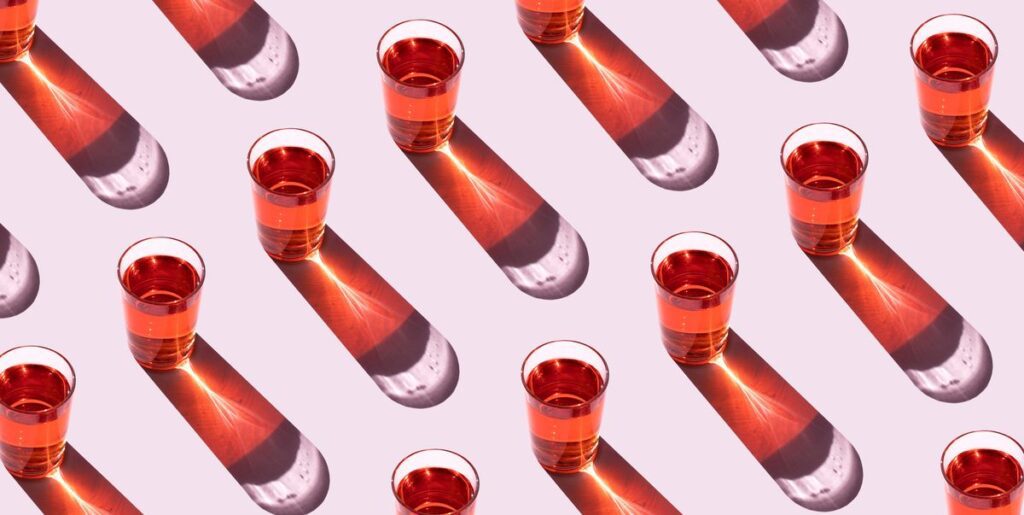Recently, on January 15, the FDA announced the revocation of authorization for red dye 3, commonly used in foods and drugs, marking its upcoming ban. Despite this decision, this additive remains prevalent in the market and will not be fully phased out until 2027.
The decision to ban red dye 3 stems from two studies that indicated a link between the dye and thyroid cancer in male rats.
According to the FDA’s press release, “Two studies showed cancer in laboratory male rats exposed to high levels of FD&C Red No. 3 due to a rat-specific hormonal mechanism.” It’s important to note that the cancer mechanism observed in rats does not translate to humans.
Red dye 3 has faced scrutiny for several years, prompting many manufacturers to begin its removal from products. Nevertheless, the dye remains in circulation across almost 3,000 products in the U.S. food and drug supply because the FDA is allowing manufacturers time to comply with the ban. Below is an overview of foods that still contain this dye and the rationale behind its prohibition.
What is Red Dye 3?
Red dye 3, also known as erythrosine or Red No. 3, is a synthetic dye derived from petroleum. It is often utilized in food products to impart a vibrant cherry-red hue.
The FDA prohibited the use of red dye 3 in cosmetics and topical drugs in 1990 under the Delaney Clause of the Federal Food, Drug, and Cosmetic Act, which states that color additives cannot cause cancer in humans or animals. While research indicates that red dye 3 may cause cancer in high doses in rats, human studies have not shown similar results.
Scott Keatley, RD, co-owner of Keatley Medical Nutrition Therapy, emphasizes, “This ingredient provides no nutritional value, merely adding striking colors to food products, which does not enhance flavor, nutrition, or shelf life.”
Many nations have previously banned red dye 3 in food. The European Union restricted its usage for specific types of processed cherries starting in 1994, while California enacted a prohibition on the dye for food products, effective by 2027.
Which Foods Contain Red Dye 3?
Numerous companies have begun removing red dye 3 due to heightened public concern. However, it continues to appear in nearly 3,000 food items, based on data from the Environmental Working Group.
Common products that may contain red dye 3 include:
- Baking decorations
- Ice cream cones
- Frostings and icings
- Frozen dairy desserts
- Soft candies and gummies
- Meal replacement drinks and bars
- Cookies
- Toaster pastries
- Ice pops
- Baby foods
- Hard candies
Why is Red Dye 3 Considered Unsafe?
The FDA indicated that the ban on red dye 3 was enforced “as a matter of law,” referencing the Delaney Clause. However, they clarified that while studies in animals linked the dye to cancer, no similar evidence in humans exists.
Wade Syers, D.Soc.Sci., a statewide food safety specialist at Michigan State University Extension, explains, “This finding is not surprising, as the Food Drug and Cosmetics Act prohibits color additives linked to cancer in humans or animals, and red dye No. 3 was found to induce cancer in male rats under specific conditions. However, there is no evidence correlating red dye No. 3 with cancer in humans.”
Concerns about red dye 3 also extend to its potential effects on children. Some studies suggest that consumption of red dye 3, among other food dyes, may be associated with behavioral problems, including hyperactivity. A 2021 report from the California Office of Environmental Health Hazard Assessment indicated that children consuming red dye 3 were more likely to struggle with focus and attention.
Nonetheless, Keatley argues that linking red dye 3 to attention deficit hyperactivity disorder (ADHD) may be misguided. “The quantities consumed daily or weekly are negligible compared to doses studied in rats,” he notes, stressing that other factors such as pollution, sedentary lifestyles, and diets rich in junk food should be prioritized instead.
While there’s no immediate cause for alarm regarding the additive, individuals concerned about ingesting red dye 3 can check product labels for “FD&C Red No. 3” or “Red 3.”
“Manufacturers have until January 15, 2027, to eliminate red dye No. 3 from their products,” Syers reminds. “In the meantime, consumers who wish to avoid this dye should carefully read ingredient lists.”


